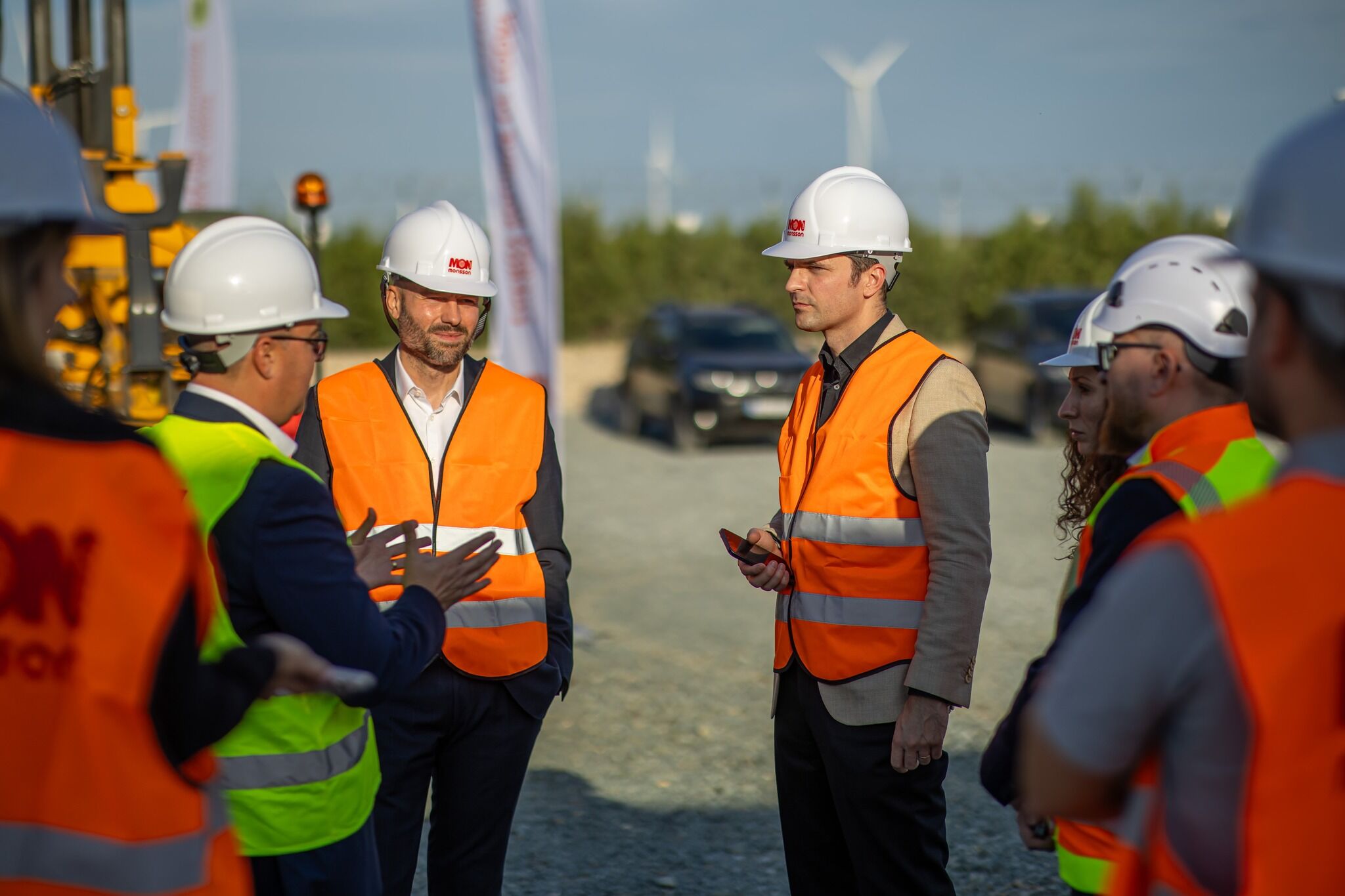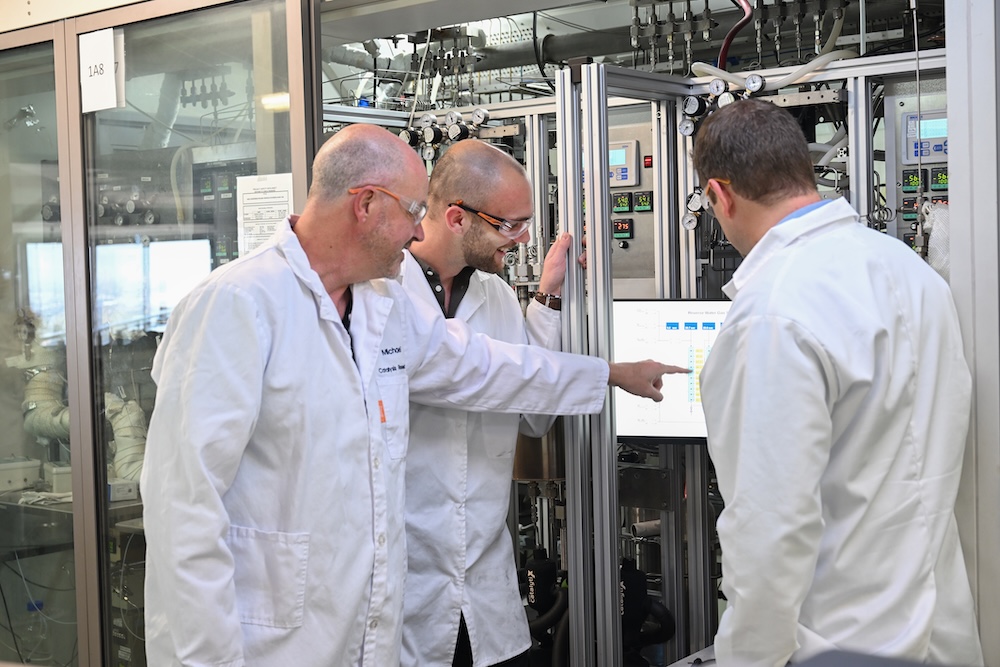Report on Romania’s Strategic Advancement in Energy Storage and Contribution to Sustainable Development Goals
Executive Summary: Aligning Energy Infrastructure with Global Sustainability Targets
Romania is undertaking a significant expansion of its energy storage capacity, positioning the nation as a key contributor to the European energy transition. Through strategic initiatives led by major utilities and supported by substantial government funding and regulatory reforms, the country is directly addressing several United Nations Sustainable Development Goals (SDGs). These efforts are primarily focused on enhancing energy infrastructure and promoting clean energy, in line with SDG 7 (Affordable and Clean Energy), SDG 9 (Industry, Innovation, and Infrastructure), and SDG 13 (Climate Action).
Electrica’s Contribution to SDG 7 (Affordable and Clean Energy)
Romanian utility company Electrica is advancing the development of 15 Battery Energy Storage Systems (BESS) with a planned collective capacity of approximately 1 GWh. This initiative is a cornerstone of the company’s 2030 Strategy and represents a direct investment in sustainable energy infrastructure. The project is designed to achieve key objectives aligned with SDG 7:
- Enhancing Grid Resilience: By distributing storage capacity across 15 locations, the project improves the stability and reliability of the national energy system.
- Integrating Renewable Energy: The BESS infrastructure will facilitate the efficient integration of intermittent renewable sources, promoting a cleaner energy mix.
- Ensuring Energy Security: The initiative aims to mitigate price volatility and reduce dependence on energy imports, contributing to affordable and secure energy for all.
A specific project underway includes a tender for a 35 MW/70 MWh BESS in Fântânele, Mureș County, further demonstrating a tangible commitment to these goals.
National Utility Initiatives and Support for SDG 9 (Industry, Innovation, and Infrastructure)
Parallel efforts by other national utilities are modernizing Romania’s energy infrastructure, a core target of SDG 9. Hidroelectrica has launched several large-scale projects to build resilient and innovative energy systems.
- Installation of energy storage systems at all its run-of-river hydropower plants to optimize energy supply and meet peak demand.
- A €16 million investment in a 36 MW/72 MWh BESS at the Crucea Nord Wind Farm.
- A plan to install a 64 MW/256 MWh BESS at the Porțile de Fier II hydropower plant, one of the nation’s largest.
These investments signify a strategic upgrade of national infrastructure, fostering innovation in energy management and supporting sustainable industrialization.
National Strategy and Financial Commitments for SDG 13 (Climate Action)
The Romanian government is actively supporting the transition to a low-carbon economy through significant financial allocations aimed at climate action. With a projected national storage capacity of 2.2 GW by the end of next year, these funds are critical for scaling up renewable energy deployment.
- National Recovery and Resilience Plan (PNRR): An allocation of €80 million is expected to secure contracts for 1.8 GW of storage capacity. A further €30 million has been designated for 791.48 MWh of BESS projects.
- Modernization Fund: A total of €300 million has been allocated to deliver at least 3 GW of additional storage capacity.
These financial commitments directly support SDG 13 by creating the necessary infrastructure to reduce greenhouse gas emissions and combat climate change through a modernized, renewables-ready grid.
Regulatory Framework Reform to Accelerate Sustainable Investment
A critical enabler for private sector investment in clean energy technology has been the reform of the national regulatory framework. In July 2025, Romania’s National Energy Regulatory Authority (ANRE) eliminated the double taxation of stored electricity. Previously, electricity reinjected into the grid from storage was subject to multiple tariffs, creating a significant financial disincentive. By removing this barrier, the government has created a more favorable investment climate, accelerating the deployment of BESS projects and reinforcing the national commitment to SDG 7 and SDG 13.
Analysis of Sustainable Development Goals (SDGs) in the Article
1. Which SDGs are addressed or connected to the issues highlighted in the article?
-
SDG 7: Affordable and Clean Energy
The article’s central theme is the development of battery energy storage systems (BESS) to support the energy grid. This directly relates to ensuring access to affordable, reliable, sustainable, and modern energy. The text states that these projects aim to “facilitate the efficient integration of renewable energy sources,” which is a core component of clean energy.
-
SDG 9: Industry, Innovation, and Infrastructure
The construction of 15 BESS projects, totaling 1 GWh, and the broader national goal of reaching 2.2 GW of storage capacity represent a significant development of “resilient infrastructure.” The article emphasizes that these initiatives enhance “grid resilience and flexibility” and are part of a strategy to “redefine Romania’s approach to energy security,” aligning with the goal of building reliable and sustainable infrastructure.
-
SDG 13: Climate Action
By enabling the large-scale integration of renewable energy, BESS projects are a critical tool for climate change mitigation. The article notes that these systems “mitigate price volatility” and reduce dependence on other energy sources, which supports the transition away from fossil fuels. This is a direct action to combat climate change and its impacts, as outlined in Electrica’s “transformation into a leader of the energy transition.”
-
SDG 17: Partnerships for the Goals
The article highlights a multi-stakeholder approach involving public utilities (Electrica, Hidroelectrica), government bodies (Ministry of Energy, ANRE), and financial mechanisms like the “national recovery and resilience plan (PNRR)” and the “Modernization Fund.” The regulatory reform to eliminate double taxation is specifically designed to encourage “private sector investment,” demonstrating a partnership between public and private sectors to achieve sustainable development goals.
2. What specific targets under those SDGs can be identified based on the article’s content?
-
SDG 7: Affordable and Clean Energy
- Target 7.2: By 2030, increase substantially the share of renewable energy in the global energy mix. The article explains that BESS initiatives are designed to “facilitate the efficient integration of renewable energy sources,” which is essential for increasing their share in the national grid.
- Target 7.a: By 2030, enhance international cooperation to facilitate access to clean energy research and technology… and promote investment in energy infrastructure and clean energy technology. The article details significant investments (€80 million, €300 million) and the deployment of advanced BESS technology, directly contributing to this target.
-
SDG 9: Industry, Innovation, and Infrastructure
- Target 9.1: Develop quality, reliable, sustainable and resilient infrastructure… to support economic development and human well-being. The projects are explicitly aimed at enhancing “grid resilience and flexibility” and ensuring “operational resilience,” which directly aligns with building reliable and resilient energy infrastructure.
- Target 9.4: By 2030, upgrade infrastructure and retrofit industries to make them sustainable, with increased resource-use efficiency and greater adoption of clean and environmentally sound technologies. The deployment of gigawatt-scale battery storage is a clear example of upgrading national energy infrastructure with a clean technology to improve efficiency and sustainability.
-
SDG 13: Climate Action
- Target 13.2: Integrate climate change measures into national policies, strategies and planning. The article mentions Electrica’s “2030 Strategy” and Romania’s “national recovery and resilience plan (PNRR),” which allocate funds for energy storage, showing that climate-related energy transition measures are integrated into strategic planning.
-
SDG 17: Partnerships for the Goals
- Target 17.3: Mobilize additional financial resources for developing countries from multiple sources. The article provides concrete examples of financial mobilization, citing specific funding allocations: “€80 million ($90.1 million) under its national recovery and resilience plan,” “€30 million in non-reimbursable support via PNRR,” and “€300 was allocated from the Modernization Fund.”
- Target 17.17: Encourage and promote effective public, public-private and civil society partnerships. The collaboration described between public utilities, the Ministry of Energy, the national regulator (ANRE), and the push for private investment through regulatory reforms (“eliminating the double taxation of stored electricity”) exemplifies the public-private partnerships needed to achieve these goals.
3. Are there any indicators mentioned or implied in the article that can be used to measure progress towards the identified targets?
-
For SDG 7 (Targets 7.2 and 7.a)
- Indicator: Installed capacity of energy storage. The article provides specific figures that can be used for measurement: Electrica’s target of “1 GWh,” the tender for “35 MW/70 MWh,” Hidroelectrica’s projects of “36 MW/72 MWh” and “64 MW/ 256 MWh,” and the national projection of “2.2 GW by the end of next year.”
- Indicator: Financial flows for clean energy. The article quantifies the investment: “€80 million,” “€30 million,” and “€300 million” from public funds, which can be tracked to measure progress.
-
For SDG 9 (Targets 9.1 and 9.4)
- Indicator: Investment in infrastructure. The monetary values mentioned (€80M, €30M, €300M) serve as direct indicators of financial commitment to upgrading infrastructure.
- Indicator: Scale of infrastructure development. The number of projects (“15 battery energy storage systems”) and the total planned capacity (“1 GWh,” “2.2 GW,” “1.8 GW,” “3 GW”) are clear metrics of infrastructure expansion and modernization.
-
For SDG 13 (Target 13.2)
- Indicator: Adoption of national strategies. The mention of Electrica’s “2030 Strategy” and the “national recovery and resilience plan (PNRR)” as frameworks for these projects indicates that climate action is being formally integrated into policy.
-
For SDG 17 (Targets 17.3 and 17.17)
- Indicator: Amount of public and private investment mobilized. The article specifies public funding amounts and mentions a “surge in private sector investment” spurred by regulatory changes, which can be tracked.
- Indicator: Development of enabling policies. The enactment of the reform by Romania’s National Energy Regulatory Authority (ANRE) to “eliminate the double taxation of stored electricity” is a concrete policy indicator that promotes public-private partnerships.
4. Summary Table of SDGs, Targets, and Indicators
| SDGs | Targets | Indicators |
|---|---|---|
| SDG 7: Affordable and Clean Energy |
7.2: Increase the share of renewable energy.
7.a: Promote investment in clean energy infrastructure and technology. |
– Total installed capacity of battery storage (e.g., 1 GWh, 2.2 GW). – Financial investment in energy storage projects (e.g., €80M, €300M). |
| SDG 9: Industry, Innovation, and Infrastructure |
9.1: Develop quality, reliable, and resilient infrastructure.
9.4: Upgrade infrastructure with clean and sustainable technologies. |
– Number of new energy storage projects (15 BESS locations). – Total planned storage capacity as a measure of grid resilience enhancement (e.g., 1.8 GW from PNRR, 3 GW from Modernization Fund). |
| SDG 13: Climate Action | 13.2: Integrate climate change measures into national policies and strategies. | – Existence of national strategies and plans incorporating energy transition goals (e.g., “2030 Strategy,” “national recovery and resilience plan”). |
| SDG 17: Partnerships for the Goals |
17.3: Mobilize financial resources from multiple sources.
17.17: Encourage effective public-private partnerships. |
– Amount of public funds allocated (e.g., €80M from PNRR, €300M from Modernization Fund). – Implementation of policies to incentivize private investment (e.g., elimination of double taxation on stored electricity). |
Source: ess-news.com






